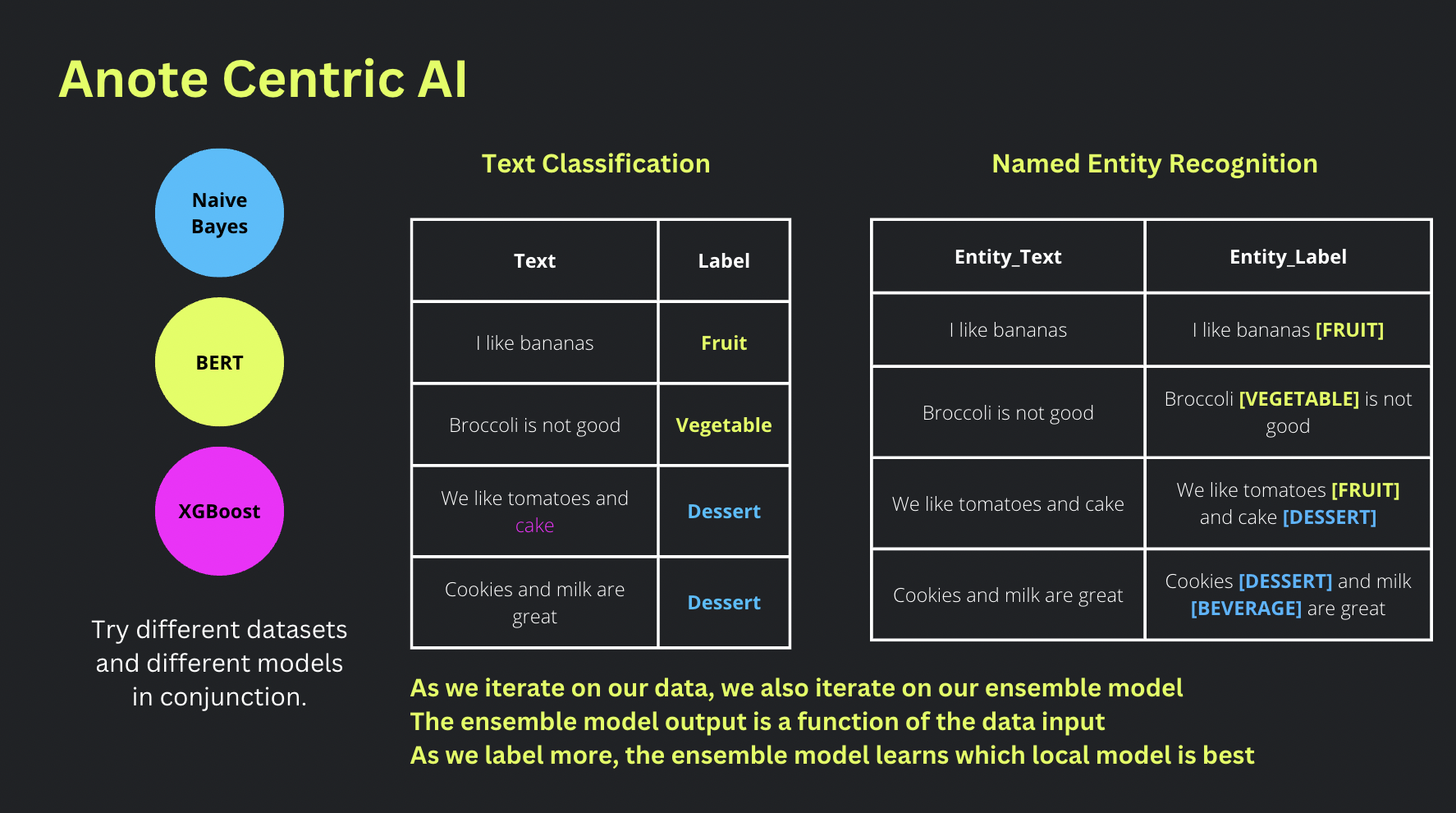Human Centric AI
Human Centric AI introduces a new way of approaching AI by focusing on iterative improvements to both the data and the ensemble model. It emphasizes the continuous addition of new data, modifications to existing categories or entities, and the adaptation of the model to provide the best performance specific to the domain or task at hand.

Text Classification Example
Let's consider a simple example of text classification to understand Human Centric AI in action. Suppose we have the following training data:
| Text | Label |
|---|---|
| I like bananas | Fruit |
| Broccoli is not good | Vegetable |
| We like tomatoes and cake | Dessert |
| Cookies and milk are great | Dessert |
In Human Centric AI for Classification, we iterate on the data continuously by adding new data or modifying the existing categories or entities present. This iterative process is accompanied by iterating on the ensemble model, which is a combination of multiple models working together.

Named Entity Recognition
Human Centric AI can also be applied to Named Entity Recognition (NER). The process involves trying different datasets and different models in conjunction to optimize the performance for specific domains or tasks.
Here's an example of how the training data may be transformed in Human Centric AI for Named Entity Recognition:
| Entity_Text | Entity_Label |
|---|---|
| I like bananas | I like bananas [FRUIT] |
| Broccoli is not good | Broccoli [VEGETABLE] is not good |
| We like tomatoes and cake | We like tomatoes [FRUIT] and cake [DESSERT] |
| Cookies and milk are great | Cookies [DESSERT] and milk [BEVERAGE] are great |
In Human Centric AI for NER, the training data is transformed by including the predicted labels within the text itself, providing more context and allowing for better training and evaluation.
Key Characteristics
The key characteristics of Human Centric AI for NER include:
-
Iterative Improvements: As we iterate on the data, labeling more examples or modifying existing entities, we also iterate on the ensemble model to adapt to the changes.
-
Ensemble Model: The ensemble model is a combination of multiple models that work together to provide the best possible output. The ensemble model's output is a function of the input data, allowing it to learn and improve as more data is labeled.
Human Centric AI recognizes the dynamic nature of both the data and the model. By continuously iterating on the data and ensemble model, it aims to achieve better performance, adaptability, and accuracy for specific domains or tasks.
Summary
Human Centric AI introduces a new approach to AI that focuses on iterative improvements to both the data and the ensemble model. It involves continuous iterations on the data, modifications to categories or entities, and adaptations to the model. By combining different datasets and models, Human Centric AI aims to optimize performance and achieve the best results for specific domains or tasks.